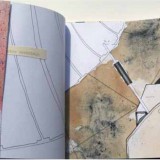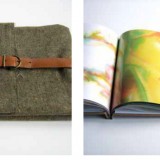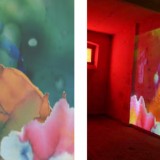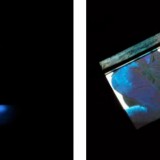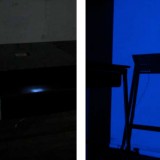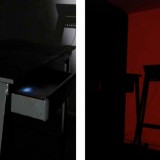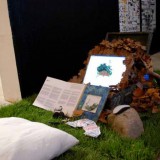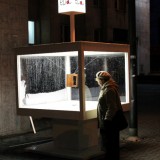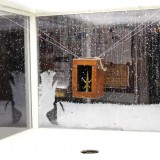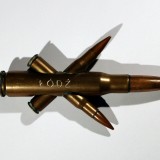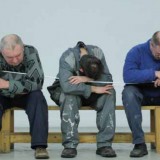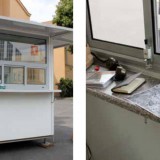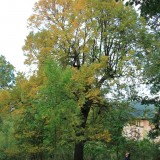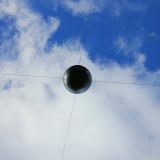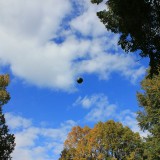Ela Wysakowska-Walters
Ela Wysakowska Walters (born in Gdynia) lives in Uniejów. She received her BA from the University of Humanities and Economics in £ód¼, and MA in 2011 from the Art University in Poznań in the studio of intermedia where now she is currently undertaking her Ph.D. The media in which she expresses herself are video, installation, audio art, art in the public environment and net art. The artist often refers to contemporary discourses such as exclusion, dictatorship, social mechanism, local and historical contexts. She does it in an insightful and non-conventional way, which causes her art to avoid preachy didactics. She has participated in exhibitions and international projects, for example Interior-ity (4th Moscow Biennale of Contemporary Art), the Mediation Biennale, the European Public Art Centre: EPAC project and COMVIDEO organised by apex art in New York. In 2011 her work Sleeping on the line was selected and included in a project entitled TRANSIT organised by the European Media Art Festival in Germany, whose aim was to discover new talented artists from Europe.
In her first works which created while still a student, the artist researched the formal values of artistic works, such as colour or visual image and the relationship between an image and its meaning. In 2008 she created an artistic book The Alchemist’s Notebook. The book explores the relationship between colour and emotions. In the description of the work we read that the work was based on the notes dating back to 1574 of an alchemist who scrupulously studied these dependencies. In the trend of art works that could be classified as poetic or oniric, there is a video entitled Room, in which the artist using intensive colours fairy tale-like images attempted to register a dream and analyse her memories from childhood. The film was made in a time lapsed animation. During £ód¼ Design event in 2009 she showed a multimedia artistic book kuczkiLas. The artist led us around a magic forest. One could make the trip by looking at the forest through the eyes of a man and a cat, which changed our perception of reality. The artist in the book used elements of drawing and collage. In the same year she created a graphic novel based on her father’s diaries which he wrote during his trips between 1976-1992.
Since 2007 Ela Walters more and more often refers to the social and political mechanisms, unmasking the principles of how they work. In a black and white animation My brain she uses a text written by a 10 year old girl Annabel from Uganda, taken from the book Miracles. Poems by children of the English-speaking world from 1966. The video refers to post-war trauma among children. In the movie Tija (2008) she provokes a question about freedom and identity. Tija is a girl from Pakistan adopted when she was a child by parents from Finland. She does not feel any connection with Pakistan, but after she travels to study in Great Britain she has to cope with the fact that because of how she looks the British automatically ascribe her to an ethnic group with which she does not identify herself. The colour of her skin and her facial type become surprisingly for Tija the predominant features of her identity.
In the video-installation Surplus from 2008 (BA diploma) the artist referred to the controversial story of the sales of bodies to the American army for medical experiments. Passing on the bodies meant breaking the last will of the dead, who offered themselves believing that they will be used to develop medicine and save human lives, but actually they were used to test landmines. The video was a simulation of a test army explosion. Three subsequent beams of light corresponded with the colours of light which are used on army fields to test explosions – white – preparations for the explosion, red – 30 seconds till the explosion, blue – the zone is safe, after the sound of an explosion. The light from the video-projector “scanned” an adjacent room and marked the border between two spaces – the dangerous zone, in which the viewers gathered and the safe zone (the room with the projector). After the sound of the explosion there was silence and darkness, after some time a blue colour appeared.
The video Sleeping on the line shows three men in working clothes who sleep while sitting and leaning against a rope. Sleeping on the line comes from English and it means to be extremely tired. In Polish we say “sleeping standing up”. The terms comes from the time of the industrial revolution and describe the real conditions of the workers. The artist pays attention to the fact that language is an archive of people’s experience. Using the expressions remembered to describe contemporary situations opened new possibilities for interpretation.
The project Witch Trial focuses on the problem of contemporary witch hunts. It consists of a blog: http://stopwitchtrials.wordpress.com/, a game and a map http://www.witch-trial.za.pl/start.html. The artist touches the problem of innocent people who are unjustly charged, convicted or prosecuted because of various circumstances. A person who enters the game replies to the questions of the judge, similar to those which were asked during witch trials when after such trials the guilty were burned at the stake (found guilty of copulating with the devil, casting a spell and so on). The questions show the absurdity of the trial in which a judgment had been already made. The map shows the silhouettes of women – witches who were condemned to punishment by death and under each of them there is an archive of the statements of her predecessors.
Witch Trial served the artist as a base of materials that she used while creating the next project entitled A scapegoat, in which she continued addressing the issues of of condemned people who are automatically considered guilty. Based on the materials from Witch Trial the artist built a series of signals which later were placed in the public space. The project existed for four days. On the first day during the Poznań Fairs there appeared a locked security guard booth inside of which there were a few artefacts. On the following day the artist entered a daily newspaper into circulation in the kiosks and city transit, inside of which she put articles inspired by the database from the blog Stop Witch Trial. The articles were based in Polish reality. On the third day around the Fairs’ Hall there was a GPS loop – phones which download GoogleMaps could receive fragments of texts about the prosecution. The fragments of texts had an unclear and irrational character. Accidental people who received the message became in a certain sense scapegoats. On the fourth day the booth was opened, the Fairs’ radio broadcast a message encouraging listeners to go to the booth and receive the information which is going to be destroyed at a certain hour. Inside of the booth there was a phone. After picking up the receiver one could hear a message recorded on voicemail (Thursday, May 16th, 14:15, and a continuous signal).
The work Talisman – a spiritual object defending against death (2012) was an amulet for £ód¼. The artist referred to the issue of superstitions which we treat apparently in fun, but serious at the same time. A superstition can determine our behaviour, become a self-fulfilling prediction. It may be also used to manipulate. The starting point for the installation An amulet for £ód¼ was a quotation from the series Blackadder Goes Forth in which its hero, a private Baldrick commented upon the superstition of soldiers that somewhere in the world there is a bullet with a name of each of them on it. Baldrick came to the conclusion that if he has the bullet on himself, it will never hit him. The installation consisted of a large display cabinet in which she placed a small object – a box with a bullet and a word “£ód¼”.
In a site-specific work entitled Sphere (2013) the artist referred to the story of Miedzianka, a village which disappeared. In Miedzianka (before 1945 Kupfeberg) there were uranium ore deposits which the Red Army intensively excavated and exported to the Soviet Union. The mining destructions were so serious that the Soviets decided to destroy the village that was 450 years old. In 1967 they exploded an Evangelic church. According to the report by a witness to the explosion listed in the book by Filip Springer Miedzianka, after setting fire to the explosives, the church raised up in one piece and then fell on the ground and scattered into pieces. The last to fall on the ground was a sphere placed below the cross on the rooftop of the church. The artist in her installation used a natural arrangements of trees which once surrounded the church. Above the place where the church stood, she hung a metal sphere, similar to the one which once decorated the top of the shrine. As Wojciech Wojciechowski wrote about this work: Miedzianka-Sphere reminds of an absent church and seems to express hope for a new stage in the history of contemporary Miedzianka, for the beginning of the process of saving of what is still possible to save. In the exhibition in the gallery a movie showing the process of assembling the installation was shown.
Ela Walters in her thinking about art connects both the stance of an artist with one of a cultural researcher. From a flood of information and messages she is able to extract those which are food for thought, whether or not they refer to contemporary or past times, to a specifically Polish situation or problems in distant countries which apparently don’t bother us. Individual narrations in Ela Walters’s artworks make a consistent whole.
Anka Le¶niak


